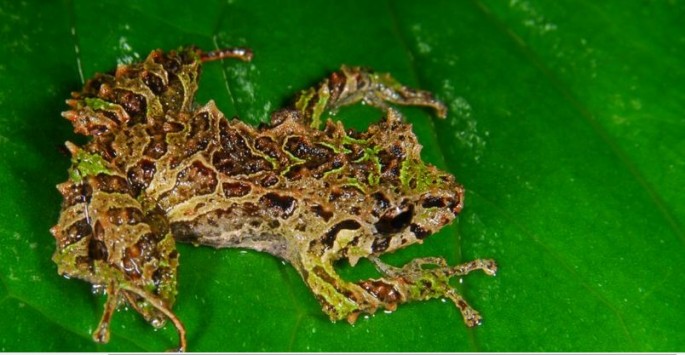A miniscule frog the size of a fingernail with the stunning ability to change its shape has become the first shape-shifting amphibian ever found.
The "mutable rain frog" (Pristimantis mutabilis) morphs its skin from smooth to spiny and then back again and researchers don't yet know how the frog does this.
Research has, however, confirmed P. mutabilis is a new and unique species through genetic tests and a description of the frog's body size, shape and color.
A female mutable rain frog is just 20 millimeters to 23 millimeters (0.8 to 0.9 inches) long. Males are even smaller. The frog skips the tadpole stage and develop into frogs directly within their eggs.
P. mutabilis was discovered on the western slopes of the Andes Mountains in Ecuador. The fog cloaked Choco cloud forest is a biodiversity haven where a new glass frog species, the Las Gralarias glass frog, was found in 2012.
Scientists from Cleveland's Case Western Reserve University and Cleveland Metroparks found the shape shifting frog during their annual survey of the reserve's amphibian population.
Katherine Krynak, a biologist and Case Western graduate student and Tim Krynak, a naturalist and Metroparks project manager, first discovered the frog in 2006 and took a photo of it. They later realized it was a new species when they enlarged the image.
"It wasn't until we saw the amazing texture of its skin that we thought, 'wow, this is something different,'" Katherine told Live Science.
Lead study author Juan Guayasamín, a professor at the Universidad Tecnologica Indoamerica in Ecuador, first suggested the little frog could be a new species, Krynak said.
In 2009, the Krynaks finally saw another "punk rocker frog" (their name for this new species) and captured it for a detailed photo session. This was when they discovered the frog's ability to change its skin texture in minutes.
Tim documented the transition with a series of photos on a smooth white board, showing the frog transform from prickly to smooth in about five minutes.
"It was remarkable," Katherine said. "We were both kind of in shock at this point."
The Krynaks think the shape-shifting spines may provide camouflage in the mossy forests, but the idea still needs to be tested.





















